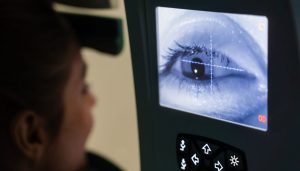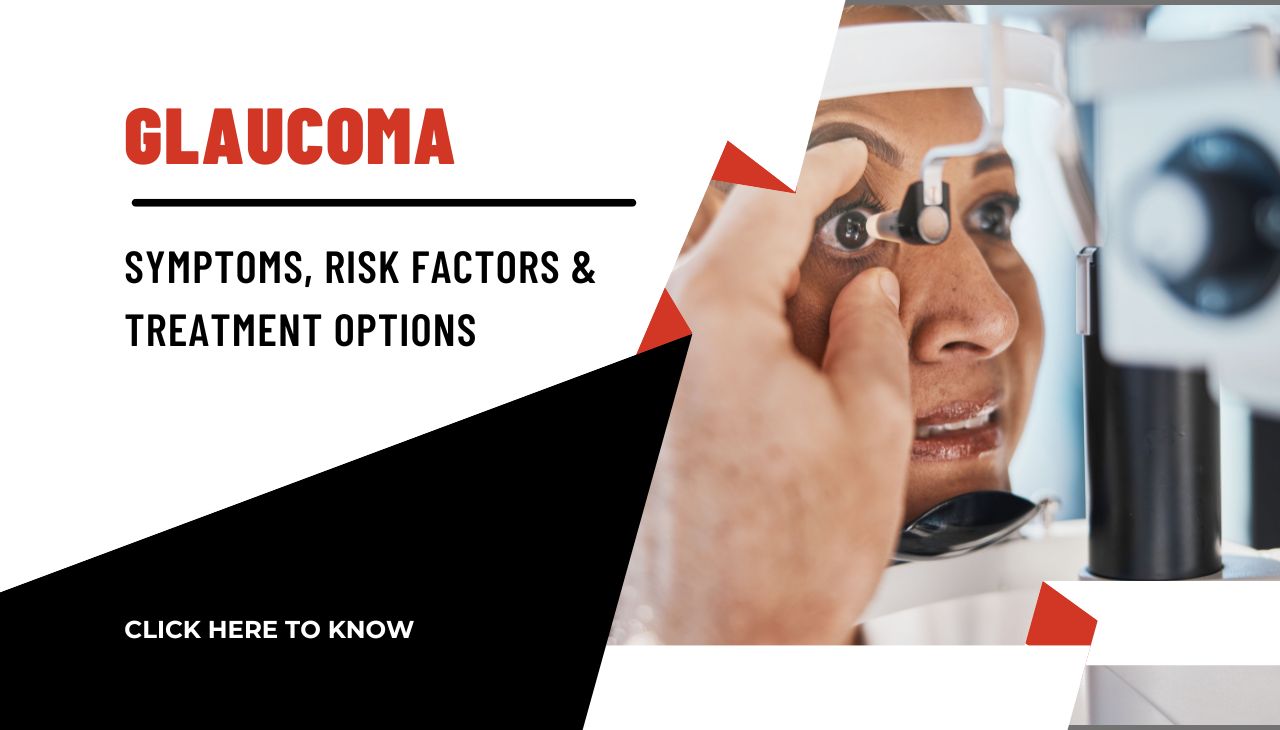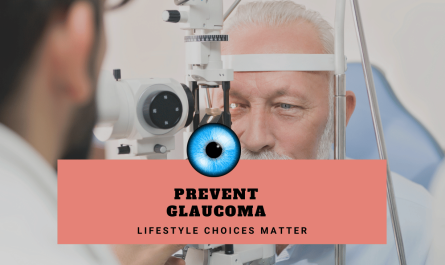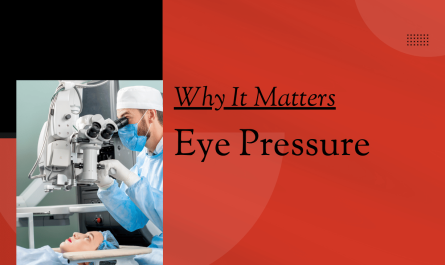Introduction
Glaucoma is one of the leading causes of blindness worldwide, affecting millions of people each year. Despite its significant impact, many individuals are unaware of the condition until it has reached an advanced stage. Understanding glaucoma—its symptoms, risk factors, and treatment options—can help you take proactive steps toward safeguarding your vision. In this blog, we’ll explore the fundamentals of glaucoma, the risk factors that increase your chances of developing it, and the treatments available to manage the disease effectively.
What is Glaucoma?
Glaucoma is a group of eye diseases that cause damage to the optic nerve, which transmits visual information from the eye to the brain. This damage is often associated with elevated pressure in the eye, known as intraocular pressure (IOP). However, it’s important to note that glaucoma can still develop even when eye pressure is normal. It is typically a progressive condition, meaning the damage occurs gradually, and in many cases, symptoms may not be noticeable until significant vision loss has occurred.
Types of Glaucoma:
- Open-Angle Glaucoma: This is the most common form of glaucoma. The eye’s drainage canals become clogged over time, leading to an increase in intraocular pressure.
- Angle-Closure Glaucoma: This type occurs when the angle between the iris and cornea becomes too narrow, preventing proper fluid drainage. It is more likely to develop suddenly and can lead to an eye emergency.
- Normal-Tension Glaucoma: In this form, optic nerve damage occurs despite normal eye pressure.
- Congenital Glaucoma: This rare form is present at birth and occurs due to developmental issues in the eye’s drainage system.
Causes, Symptoms, and Risk Factors
Causes of Glaucoma: While the exact cause of glaucoma is not always known, several factors contribute to its development. High intraocular pressure, poor drainage of fluid in the eye, and genetics all play a role in the disease’s progression. Glaucoma can also be caused by other eye conditions, including cataracts, eye injuries, and certain medications like steroids.
Symptoms of Glaucoma: The most troubling aspect of glaucoma is that it often develops with few or no noticeable symptoms in its early stages. In fact, many people with glaucoma do not experience pain or significant vision problems until the condition has advanced. However, there are some warning signs to look out for, especially in angle-closure glaucoma:
- Gradual loss of peripheral vision: This may initially go unnoticed but eventually affects the ability to see objects out of the corner of your eyes.
- Blurred vision: As pressure builds up in the eye, blurry or cloudy vision may occur.
- Halos around lights: Some individuals with glaucoma may notice rainbow-colored halos around light sources.
- Severe eye pain and nausea: In acute angle-closure glaucoma, sudden eye pain, headache, nausea, and vomiting can occur, often signaling a medical emergency.
Risk Factors for Glaucoma: Several factors can increase the risk of developing glaucoma, including:
- Age: People over the age of 60 are at higher risk, especially those of African or Hispanic descent.
- Family history: A family member with glaucoma increases your risk of developing the condition.
- High intraocular pressure: Increased eye pressure is one of the primary risk factors.
- Medical conditions: Conditions like diabetes, high blood pressure, and heart disease can increase the likelihood of glaucoma.
- Ethnicity: Individuals of African, Asian, or Hispanic descent have a higher risk of developing glaucoma.
Treatment Options for Glaucoma

While there is no cure for glaucoma, it can be effectively managed with early detection and appropriate treatment. The goal of treatment is to lower intraocular pressure to prevent further damage to the optic nerve. Here are some common treatment options:
1. Medications (Eye Drops and Pills):
- Prostaglandin analogs: These help increase the drainage of fluid from the eye, lowering eye pressure.
- Beta-blockers: These reduce the production of fluid in the eye, helping to control pressure.
- Alpha agonists and carbonic anhydrase inhibitors: These medications either decrease fluid production or increase drainage to control pressure.
- Combination medications: Sometimes, a combination of medications may be prescribed to maximize the effect.
2. Laser Treatment:
Laser therapy can help open blocked drainage channels or improve the eye’s drainage system. The most common laser treatments include:
- Laser trabeculoplasty: Used for open-angle glaucoma to improve fluid drainage.
- Laser iridotomy: Used for angle-closure glaucoma to create a small hole in the iris, improving fluid drainage.
3. Surgery:
If medications and laser treatments are not sufficient, surgery may be required. Surgical options include:
- Trabeculectomy: The surgeon creates a new drainage channel to reduce intraocular pressure.
- Shunt surgery: A small tube is inserted to drain excess fluid from the eye.
- Minimally invasive glaucoma surgery (MIGS): This involves smaller incisions and faster recovery times than traditional surgeries.
Additional Insights & Expert Recommendations
Prevention and early detection are key in managing glaucoma effectively. Regular eye exams are essential, particularly if you fall into a high-risk category. During an eye exam, your eye doctor will measure your intraocular pressure, inspect the optic nerve, and check for other signs of glaucoma. For individuals with a family history of glaucoma or other risk factors, it is recommended to get an eye exam every 1-2 years starting at age 40.
Maintaining a healthy lifestyle can also play a role in reducing your risk of developing glaucoma. A balanced diet rich in antioxidants, regular physical activity, and controlling conditions like high blood pressure or diabetes can help preserve eye health.
Consultation at Laxmi Eye Hospital
If you are concerned about glaucoma or other eye conditions, Laxmi Eye Hospital is here to help. With over 30 years of experience in eye care, Laxmi Eye Hospital has earned a reputation for providing world-class diagnostic and treatment services across Mumbai and Navi Mumbai. The hospital is known for its transparency in treatment and highly skilled doctors specializing in cataract surgery, LASIK, glaucoma management, retina care, and more.
Laxmi Eye Hospital offers state-of-the-art facilities and cutting-edge treatments for various eye conditions, including specs removal, cataracts, and diabetic eye problems.
To schedule a consultation,
visit one of our branches:
- Laxmi Eye Clinic (Dombivli): 1st Floor, Laxmi Eye Institute, SS Business Park, Gharda Circle, Dombivli East, Mumbai.
- Laxmi Eye Clinic (Kharghar): Office 108, 109 and 110, Anant CHS, Kharghar, Navi Mumbai.
- Laxmi Eye Hospital (Panvel): Mulla Hamid Rd, Old Panvel, Navi Mumbai.
- Laxmi Eye Institute (Kamothe): Shop No 26/27, Kamothe, Navi Mumbai.
FAQs
- What is the most common type of glaucoma?
- Open-angle glaucoma is the most common type, which develops slowly and without noticeable symptoms.
- Can glaucoma be prevented?
- While glaucoma cannot be completely prevented, early detection and regular eye exams can help manage the condition and prevent significant vision loss.
- Is glaucoma hereditary?
- Yes, glaucoma can run in families. If you have a family history of the condition, you may be at higher risk.
- What are the symptoms of acute angle-closure glaucoma?
- Symptoms include sudden severe eye pain, blurred vision, nausea, vomiting, and halos around lights.
- Can I live a normal life with glaucoma?
- Yes, with proper treatment and regular monitoring, most people with glaucoma can maintain good vision and quality of life.
Conclusion
Understanding glaucoma—its causes, symptoms, and treatment options—is crucial for preserving your vision. If you are at risk, regular eye exams and early intervention are key to preventing serious vision loss. Don’t wait until it’s too late—reach out to Laxmi Eye Hospital for expert care and personalized treatment. Protect your eyes today for a clearer tomorrow.




